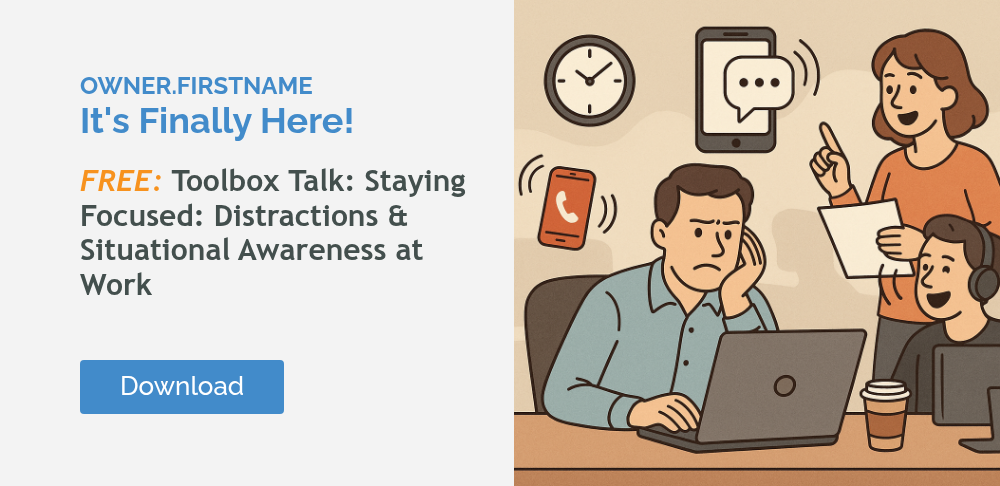Construction and manufacturing sites are full of obvious hazards—fall risks, heavy equipment, electrical dangers. But one hazard is often overlooked: distraction in the workplace. For tools and strategies to address this risk, check out Workplace Distractions.
It may not look dangerous at first, but distractions steal focus, increase mistakes, and cost companies far more than most safety directors realize. From lost productivity to serious injuries, the impact is measurable—and preventable.
How Big of a Problem Is Distraction in the Workplace?
Distraction isn’t just about checking a phone. It includes noise, interruptions, mental stress, fatigue, and multitasking. When focus slips, the risks increase. For actionable strategies to combat distraction on your site, explore Workplace Distractions.
-
Productivity loss: Studies show workers lose an average of 23 minutes refocusing after each interruption. Multiply that across a crew and you’re losing hours of production every day.
-
Error rates: Multitasking increases mistakes by as much as 50%. On a job site, one small error can lead to costly rework—or worse, an injury.
-
Safety incidents: Research links distraction in the workplace to higher rates of slips, trips, falls, and struck-by accidents. The National Safety Council estimates hundreds of fatalities every year are tied to distraction.
For construction and manufacturing, where hazards are already high, distraction makes dangerous work even riskier.
The Financial Toll of Workplace Distraction
The dollars add up quickly. Beyond lost time and reduced efficiency, distraction leads to:
-
Injury costs — OSHA estimates that a single workplace injury costs companies over $40,000 on average, with serious cases reaching six figures.
-
Workers’ comp claims — A distracted moment can turn into a repetitive strain injury, fall, or equipment mishap, all of which drive up insurance premiums.
-
Project delays — Mistakes caused by inattention ripple across schedules, creating overtime costs and missed deadlines.
What seems like “just a small distraction” can quickly become a six-figure problem for employers.
How Safety Directors Can Reduce Distraction in the Workplace
The good news? Distraction can be managed like any other hazard. Safety directors can take practical steps to minimize risks:
-
Create distraction-free zones — Identify high-risk areas (scaffolds, lifts, machinery) where phones and personal devices are not allowed.
-
Address noise as a hazard — Use hearing protection programs that also support clear communication.
-
Tackle mental distractions — Incorporate stress management, fatigue awareness, and mental health resources into your safety program.
-
Train on single-task focus — Reinforce the dangers of multitasking during toolbox talks.
-
Lead by example — Supervisors and safety leaders should model undistracted work habits on the job.
By treating distraction the same way you treat PPE or hazard controls, you send a clear message: staying focused is part of staying safe.
Final Word: Distraction in the Workplace Is a Safety Hazard
For safety directors, the takeaway is clear: distraction in the workplace isn’t just about lost time—it’s about lives, injuries, and financial losses. Every minute of lost focus creates a new opportunity for risk.
By identifying distractions and putting controls in place, safety leaders can cut costs, prevent accidents, and strengthen their overall safety culture.
Because at the end of the day, focus isn’t optional—it’s lifesaving.



.png?width=352&name=blog%20image%20(2).png)
.png?width=352&name=blog%20image%20(1).png)

Leave a Comment